I recently walked on the Santorini caldera. Okay, this might be less significant to mankind’s history than Neil Amstrong’s iconic first walk on the Moon on 20 July 1969. I landed on a narrow and curved piece of bare rock somewhere in the Greek Cyclades, aboard my own spacecraft directly inspired by the famous Apollo 11 US vessel.

My deed confirmed not only my bravery but also my resilience. I stayed in the eye of the cyclone for two weeks, against 21 hours and half spent by the US commander Amstrong and his crew Aldrin on the Moon in a quiet location named Sea of Tranquility.
While approaching the planet Earth, I spotted my destination: the caldera of Santorini (formerly Thera) in the Aegean Sea.
Santorini caldera

What is a caldera? It is a cauldron-shaped geological depression resulting from the emptying of a magma chamber during a volcanic eruption, inform us the scientists. In a more simple language, a caldera is the top of the chimney of a volcano. In apocalyptic terms, it is a borehole all the way down to hell and its eternal fire. Yes, the lovely Santorini island is part of a dormant volcano and sits on a half-submerged caldera.
The oval-shaped arrangement of islands in the photograph above sketch the caldera of former large and circular volcano. Today’s Santorini, Thirasia and Aspronisi islands constitute the vestiges of the former caldera that was destroyed by an gigantic volcanic eruption. Prior to the eruption, an earthquake tapped the top of the caldera, which fuelled an enormous underground pressure until the tap disintegrated.
The volcanic explosion took place between 1600 and 1627 BCE, followed by a massive tsunami. It was four times stronger than the eruption of the Krakatoa volcano in Indonesia in 1883. Some large rock pieces projected into the atmosphere were found much later in Greenland.
The caldera explosion and the ensuing tsunami destroyed most of the volcanic island and probably obliterated the Minoan population that had migrated there from Crete. It may have hastened the collapse of the Minoan civilization on Crete island itself.
Nowadays, Santorini volcano is dormant, thus still active underground. In the centre of the photograph, Nea Kameni (New Chimney) island emerged in 1707 as most recent peak of the underwater volcano. Three eruptions were recorded in the area during the 20th century only.
I told you: I landed in the eye of the cyclone aboard my spaceship. But what a stunningly beautiful eye…


Nea Kameni
Nea Kameni island has nowadays its own caldera, that only the bravest people visit. This is what I did upon landing indeed. The island is accessible from one small port in Santorini island. Several local fishermen decline my request to transport me there. “You better don’t approach the beast that inhabits Nea Kameni”, I am advised.





An old fisherman finally agrees to guide me, under the condition that we will use a sailboat: “The beast is sleeping and does not like noise”.
Nea Kameni is pure rock, dark, red volcanic material, odd shapes with often cutting edges. After about an hour of walk uphill, we reach the eye of the cyclone.
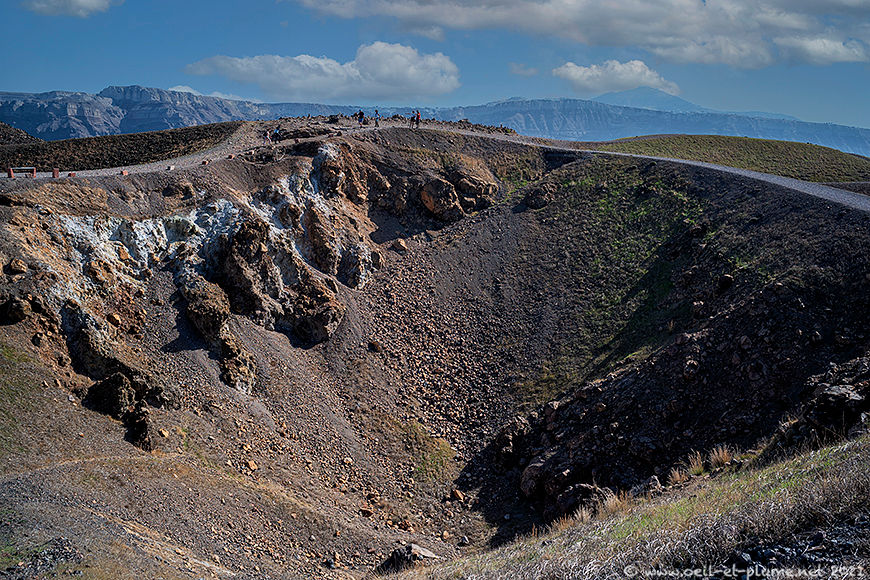

The first view of the volcanic caldera might be deceptive, as the modest geological depression utters a misleading feeling of quietness. However, a sulphuric smell prevails in the air, fuelled by gas and smoke released by sulphur depots along the crest of the caldera. The volcanic cauldron is obviously on the fire and something is cooking.
“Is that all? – No, no!” The fisherman guide me cautiously up to the top of a nearby hill. Pointing a trembling finger toward the sea and Santorini island, he whispers: “The beast is there”.
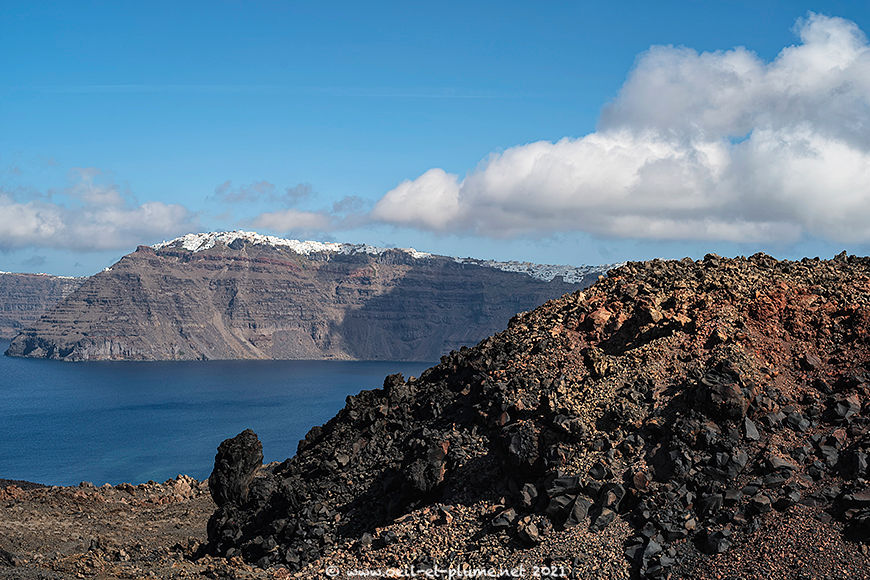
I risk a couple of pictures of the sleeping beast, shot from afar in silent mode. I don’t wish to provoke the first volcanic eruption of the dormant volcano in the 21st century indeed. We soon leave the beast den located in Nea Kameni.
Santorini
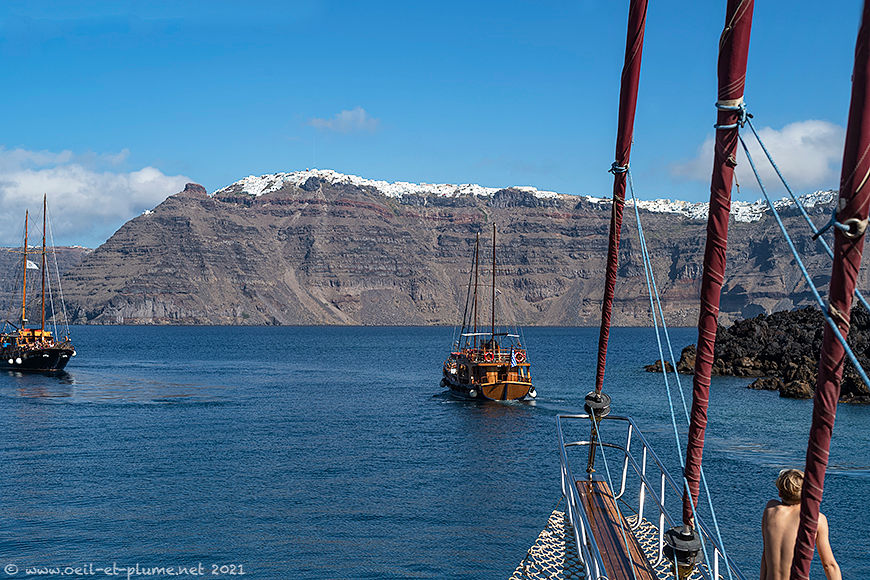
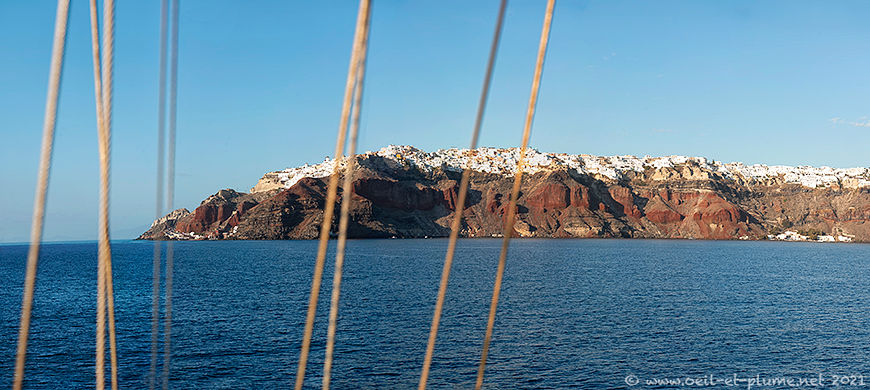
While sailing back to Santorini island, I much enjoy this moment of more genuine serenity, surfing blue and quiet sea water and facing the roughness of the dark volcanic cliffs topped by a fringe of whitewashed constructions.
I love this bold squared rock over there, which hosted a Venetian military fort in the Middle Age. And underneath, this small but audacious churched perched above the waters of the caldera.
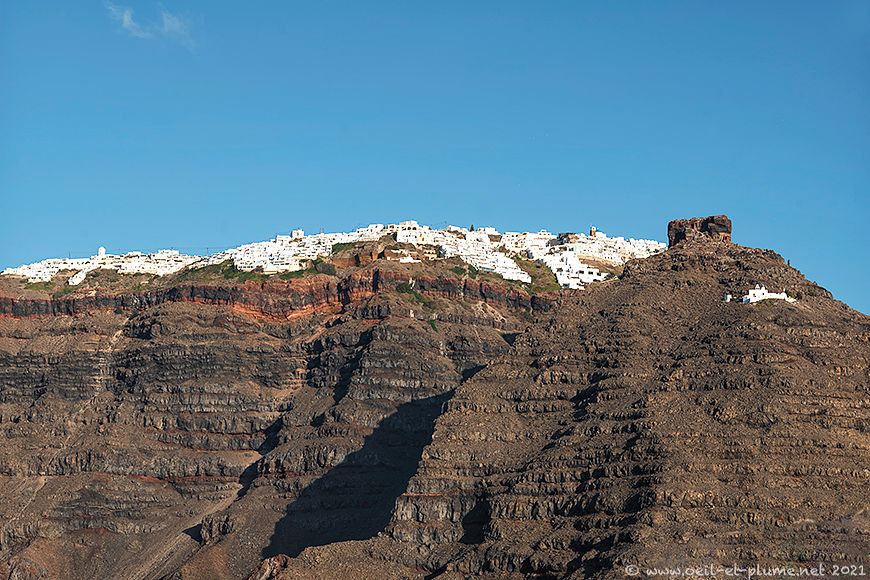
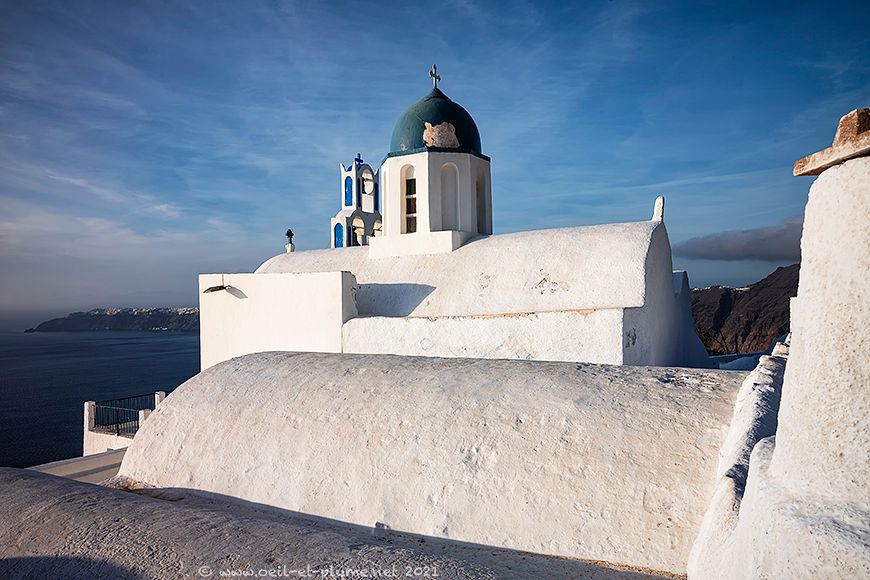
Once in Santorini, I visited that church from above, following a pathway descending from the squared rock. I also considered spending some time and money on those sun loungers, but my bank unfortunately opposed the plan.
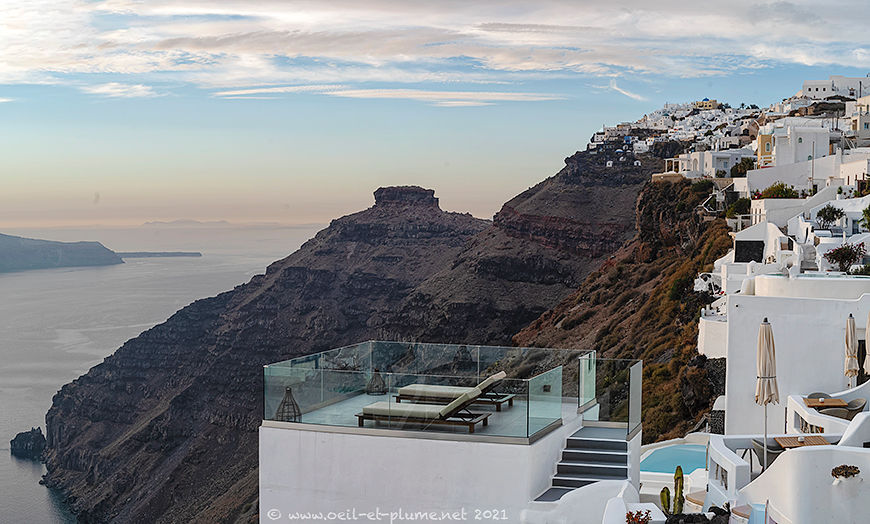
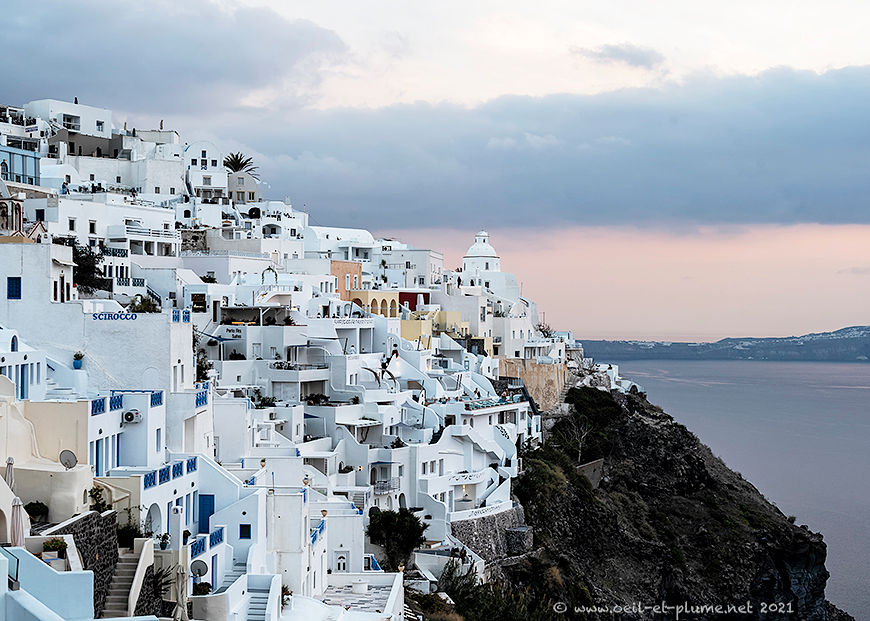
As globetrotter, I am inclined to off-the-beaten-track travel. My photography and writing aim to present not necessary unknown geographic locations, but rather peculiar and innovative perspectives on them.
I confess here my miserable creative failure regarding Santorini. The iconic Cyclades island is notoriously famous for the breathtaking sea views from its cliffs, as well as for its stunning sunsets over the Aegean Sea. I admired and enjoyed Santorini’s sea views so much that my camera did not resist capturing and interpreting them too.
Look at them and tell me whether you would resist shooting postcard-like pictures in Santorini.
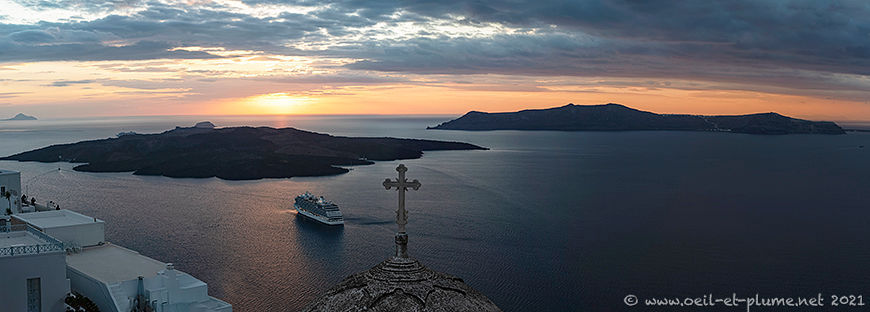
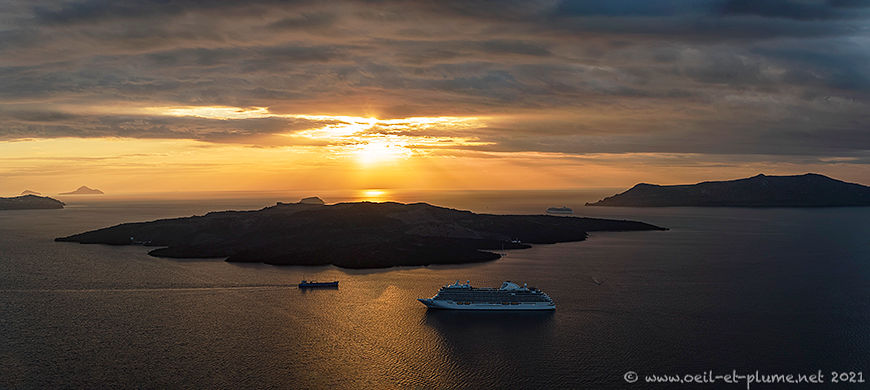


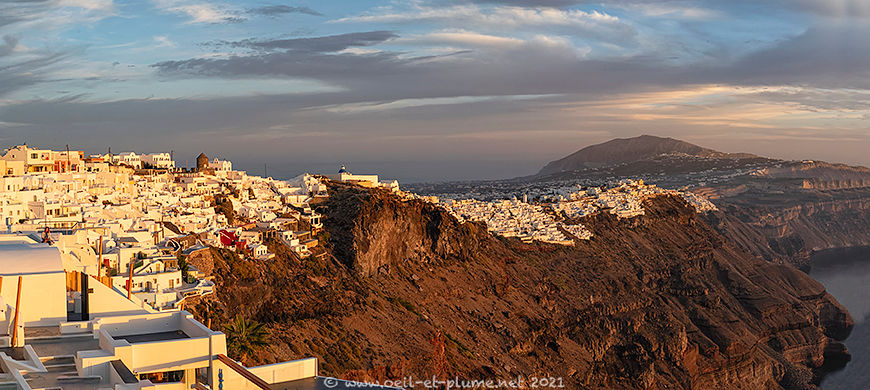
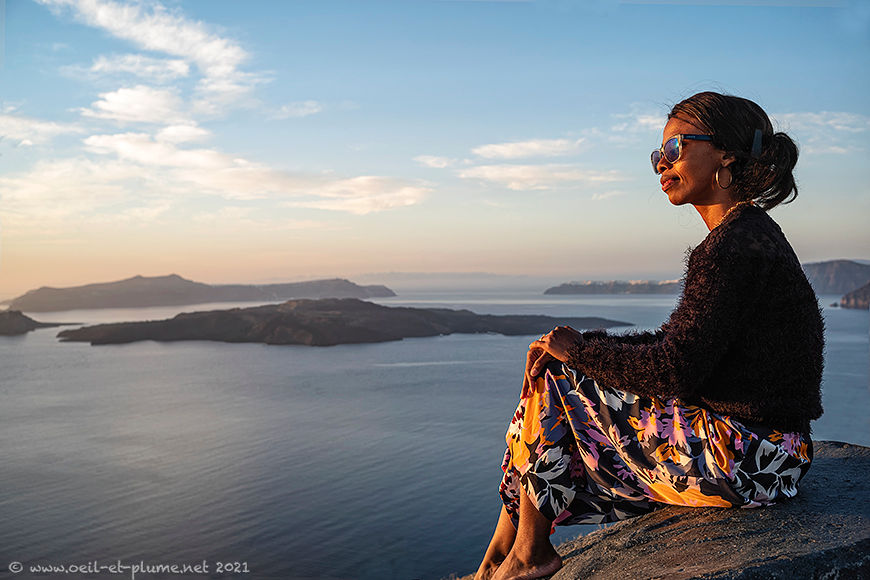
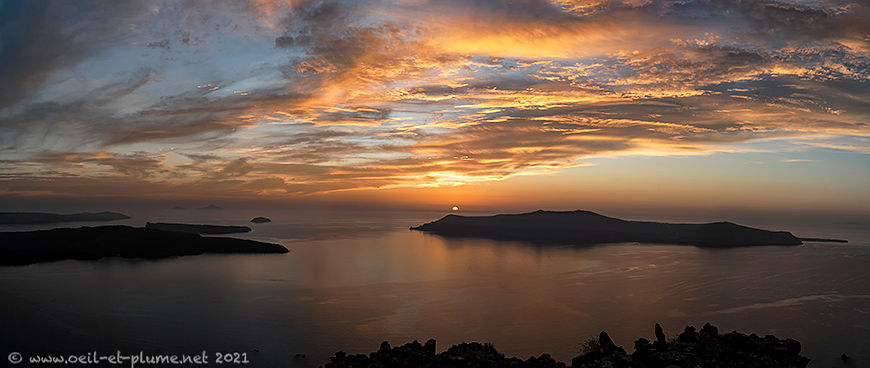

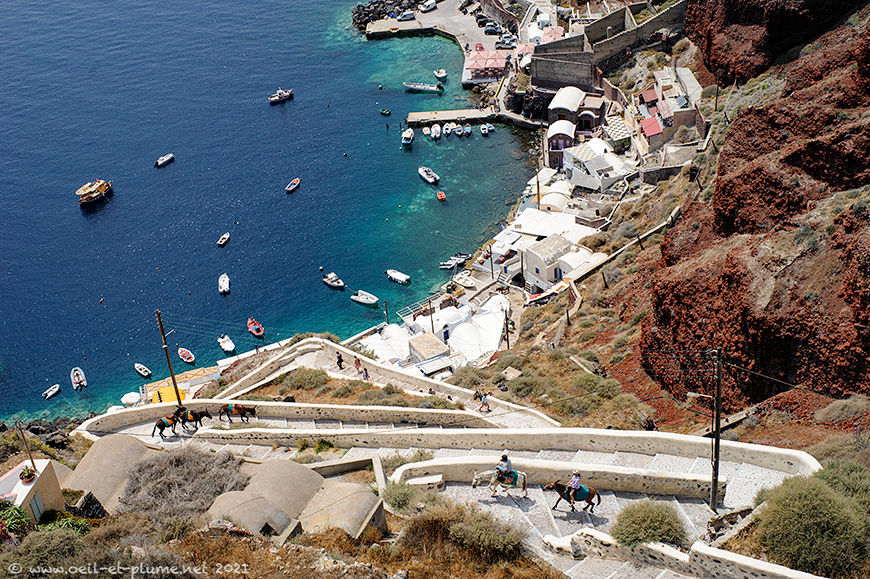
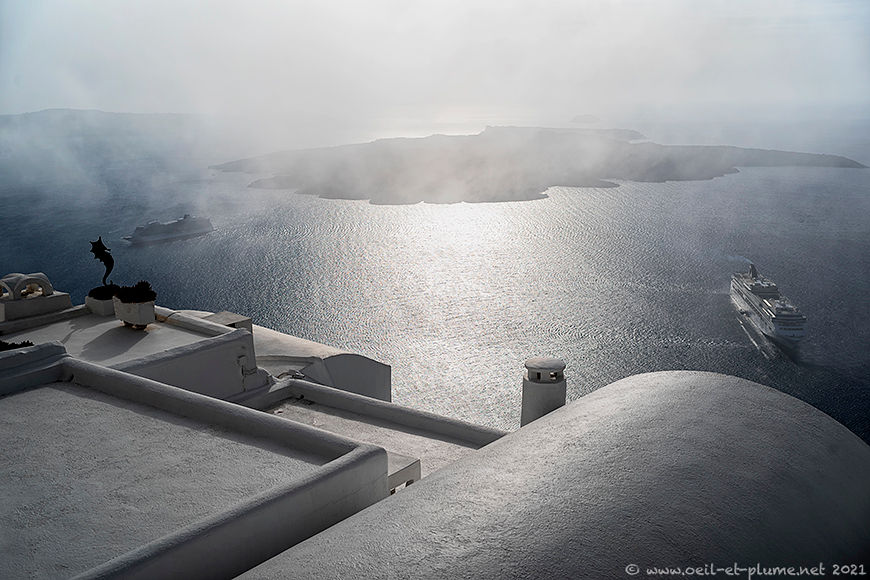
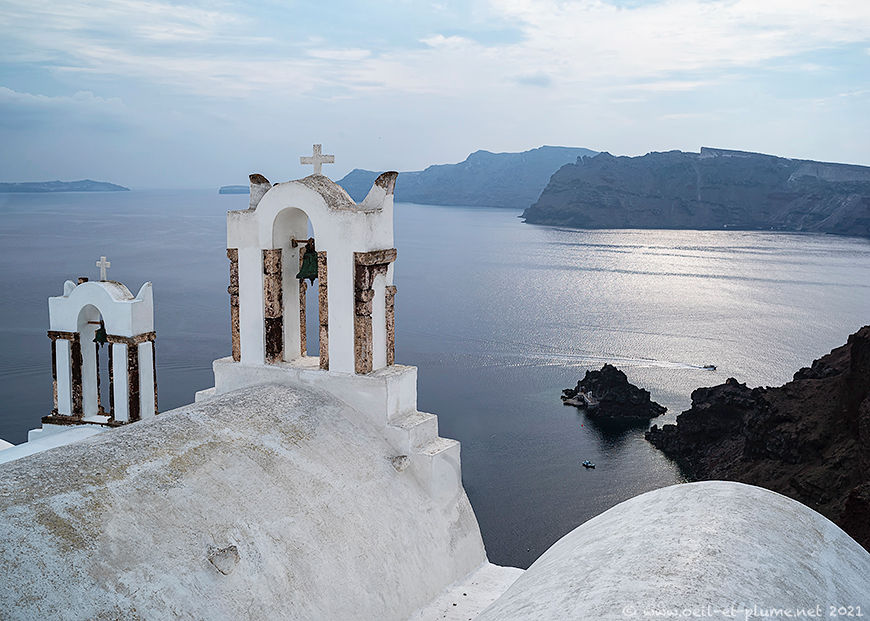

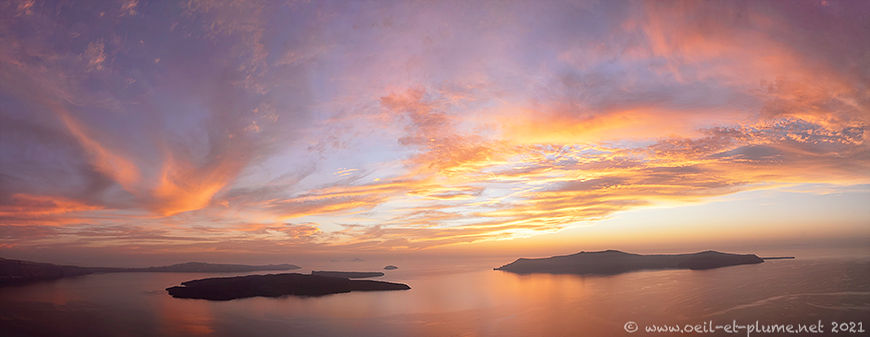

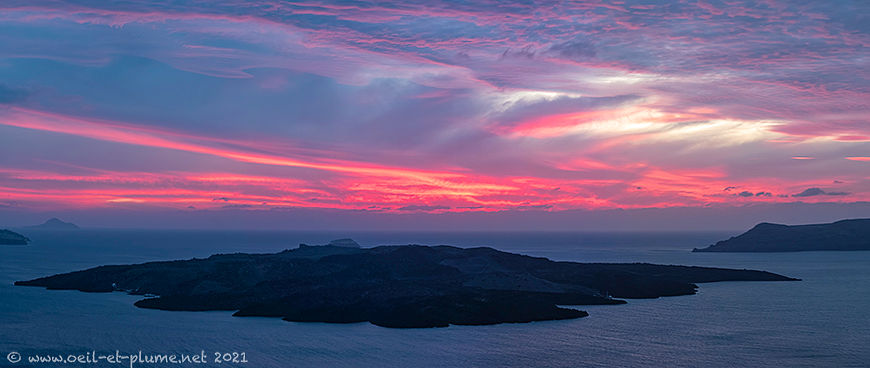
Santorini volcano did not wake up during my stay. However, it roared, fumed and burnt in the air.
This is my experience and my story about Santorini’s caldera. You certainly understood that it entails a fantasy component that should not be taken at face value. It remains that the location is awesome and nurtures a unique vibe, even within the Cycladic islands.
Leaving now for another galaxy.
Cheers,